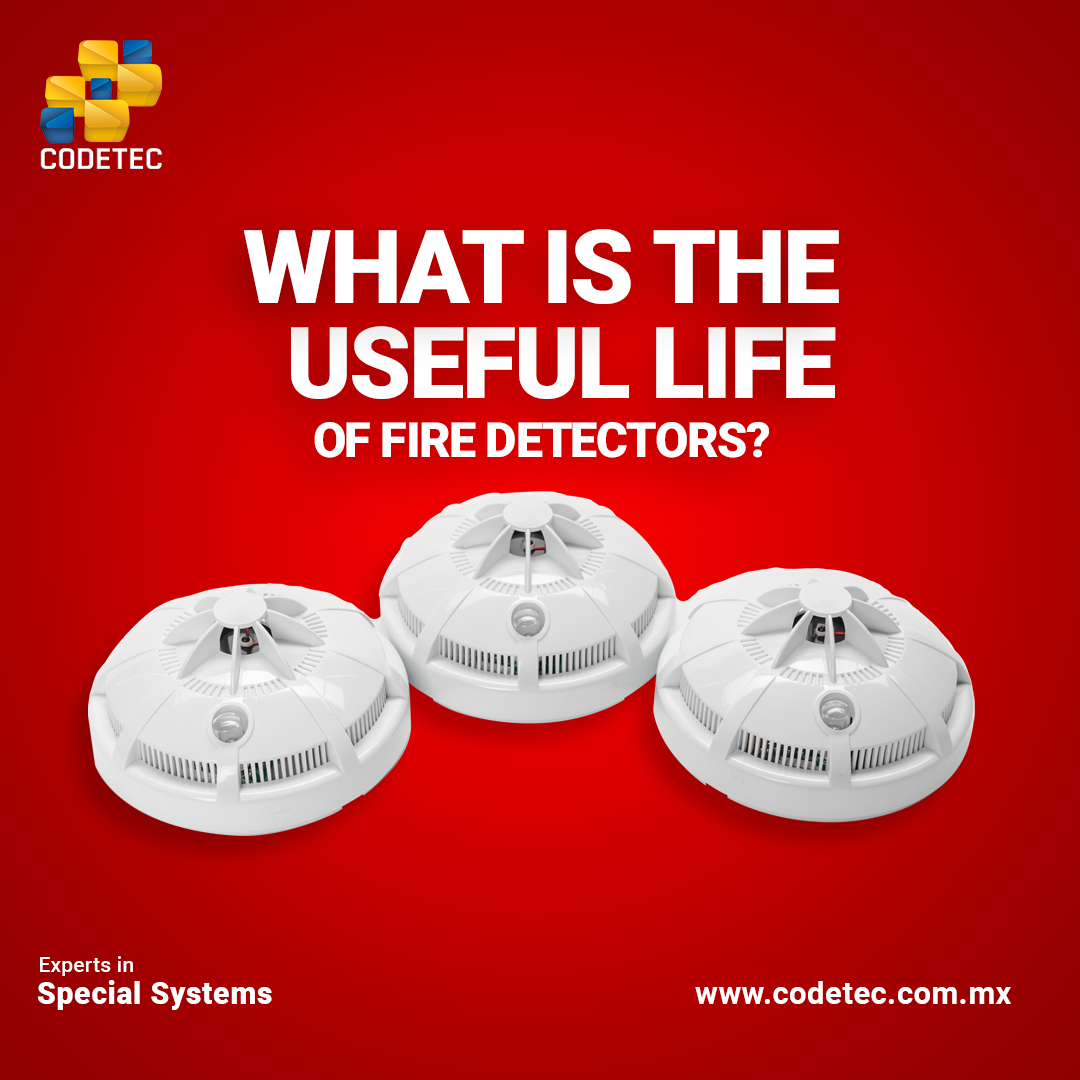
International experts indicate the useful life of fire detectors in 10 and 15 years.
By:Isabel Fierro |
The FIA, Fire Industry Association*, has published a study carried out in 2020 on the false alarms of domestic and commercial detectors, reaching the recommendation that domestic smoke detectors must be replaced after 10 years of their useful life, and in the case of commercially installed detectors it is recommended to replace them after 15 years, as long as the manufacturers do not specify that it be sooner.
Similarly, in Gulf Fire Review, expert Paul Pope* points out some interesting facts. The term “service life” when used in the context of fire and security systems, relates to the ability of the entire fire detection and alarm system to function properly and remain fully operational while under attack. of a fire.
Although there are already a number of standards related to system lifespan, there is no single standard that determines the need for the overall lifespan capability of a detection and alarm system. Therefore, it must be a shared responsibility among all professionals in the sector (manufacturers, installers, maintainers and users). Greater awareness of its importance will require a collaborative approach across the industry. There are various standards that touch on life capacity, but the understanding and real life implications vary considerably and there is no clear industry performance specification for life capacity.
According to the experts, in order to achieve adequate useful life standards, action must be taken from the beginning of the system design, installation and start-up process. Thus, if it is taken into account from the design, and each individual element of the system is capable of surviving for the time required by the building and its evacuation strategy, the desired results will be achieved.
Designing fire safety systems that take the project life into account is what is recommended by the principles outlined by Dame Judith Hackitt in her 2018 ‘Building a Safer Future’ report which was published in the aftermath of the Grenfell Tower disaster. . In his report, Hackitt recommends introducing a “gold thread” approach that applies “both to the information that enables you to understand a building and to the steps needed to keep both the building and people safe, now and in the future.” future”.
The guide aims to raise awareness among those responsible for the design, construction and management of buildings. Hackitt’s recommendation is that security be considered at every stage of a building’s life cycle.
Likewise, the role of advanced technology is pointed out to guarantee the useful life of detection and alarm systems, given the possibilities and advantages offered by remote signal management and control systems for the maintenance and reception of alarms.
Going back to the research work presented by the FIA Association, we can recognize some clues to determine the optimal replacement period for smoke alarms and detectors in domestic and commercial environments respectively. The first stage of this work was to identify the pass/fail limits by measuring the sensitivity of new optical smoke detectors that are installed in homes and businesses, in a controlled environment using appropriate test equipment. This established the limits of sensitivity during the tests in situ.
In the second phase of this work, certain homes and businesses that had old optical smoke detectors installed were visited to test their sensitivity. Age, model, manufacturer, environmental cleanliness, device status, alarm/detector position, orientation, and digital analysis apparatus result were recorded for each alarm and detector measured. This data was then used to identify whether the sensitivity of the alarms and detectors had been affected over time.
Among the conclusions of this research, the following can be highlighted:
Alarms and detectors from different manufacturers have different sensitivities, which is to be expected due to their design differences.
In field testing of optical smoke alarms and optical smoke detectors there are difficulties in testing a particular type of smoke alarm/detector of a certain age.
Properties were often found not to have clear and concise records of the type, age and model of smoke alarms/detectors installed. Therefore, visits to these properties were not always successful.
There were also challenges related to testing optical smoke alarms within homes due to the prevalence of ionization smoke alarms and home access issues. However, the most effective methods for testing household and commercial optical smoke detectors were identified, allowing 107 detectors (of 20 models) and 86 alarms (of 23 models) to be tested.
In the analysis, the sensitivities of commercial optical smoke detectors and household optical smoke alarms were relatively consistent regardless of age. However, older home smoke detectors have seen a slight increase in sensitivity*.
Both the alarms and the detectors were more sensitive when they were dirtier.
The proposed replacement period for commercial smoke detectors is 15 years and for residential smoke detectors is 10 years.
*It seems a contradictory conclusion, the fact is that time modifies the dynamic response of the sensor causing it to be closer to causing a false alarm. A system that compensates for drift would produce a prior maintenance notice. Older equipment may not be equipped with this measure, be it conventional or addressable technology detectors. It may also not apply to detectors for residential use.
Do you want to know more information about fire detection systems?
Write to us at [email protected]
Source of Information: Tecnifuego
Bibliography
*FIA Study “Vida útil sistemas de detección y alarma” https://www.fia.uk.com/cut-false-alarm-costs.html
*Artíicle “Shining a spotlight on fire system survivability”, Paul Pope (Gulf Fire Magazine, september 2022) https://edition.pagesuite.com/html5/reader/production/default.aspx?pubname=Gulf%20Fire&edid=ea540182-168a-45a8-a880-db9816b879bc&utm_source=newsletter&utm_medium=email&utm_campaign=Gulf+Fire+eNews+Dec+2022



